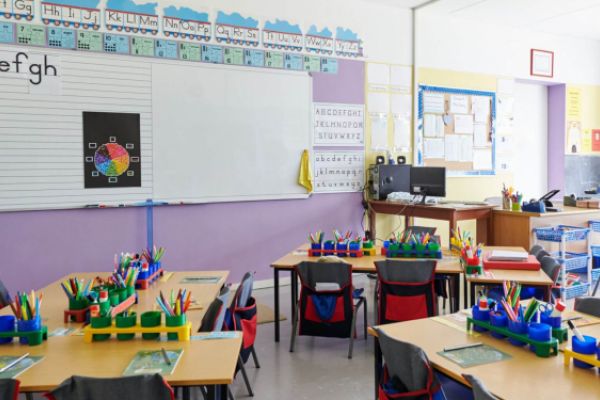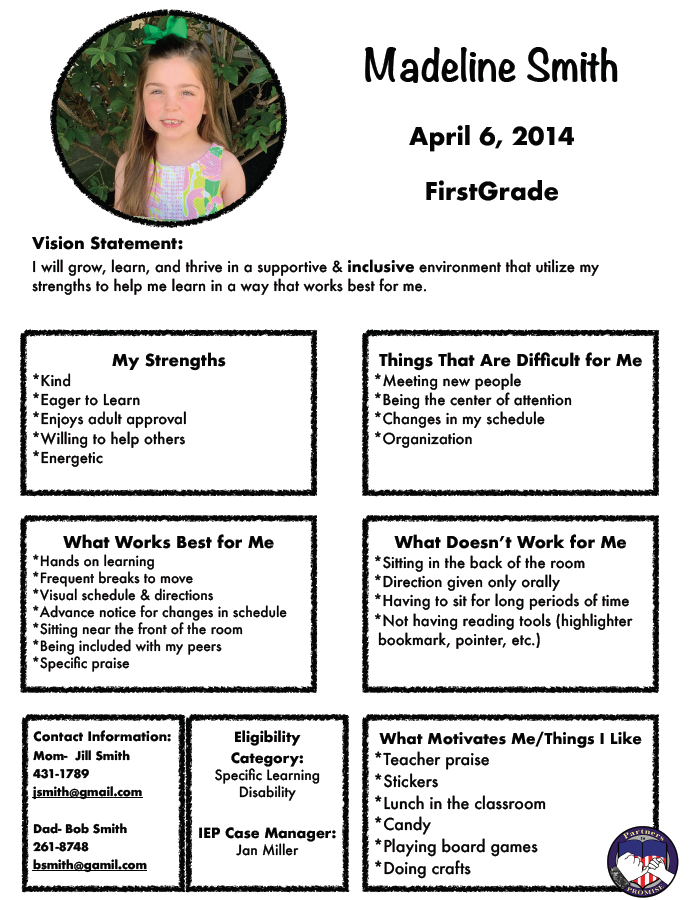
It’s Time for a Transition IEP Meeting- What should I do next?
| IEP, IEP Meetings, Transition
Disclaimer – In many special education discussions, “transition” may refer to when the student is graduating or aging out of the system. It is important to note that this blog is not in reference to the mandated “transition planning” portion of an IEP for high school students.
By Erin Mahaffey
In many states, it is common practice to have a Transition IEP Meeting when a student with an IEP promotes the next level school, such as the leap from Preschool to Kindergarten, graduating elementary and going to middle school, or the middle to high school transition. These transitions can be stressful for all students and parents, but they are incredibly daunting for parents who have children with IEPs.
Your role on the IEP team
As a parent, you are the one constant advocate for your child, no matter who the specialists are at the table, what grade level your child is in, or what state you are currently living in. You know your child best and have the right to advocate accordingly. Here are three tips for before, during, and after a transition IEP meeting to ensure a smooth adjustment to your child’s new educational environment.
Before the meeting
Transition IEP meetings are typically scheduled for March and April. Most school districts prefer to have them completed before state testing and the end-of-year chaos. When the school contacts you to schedule this meeting, you should do the following:
- Ask if the receiving school will have a representative present at this meeting. This is important because they will be able to answer specific questions about scheduling, services, extracurriculars, etc. If your current school has not invited a representative, request that they do. Prior to the end of the meeting, ensure that you get the receiving school representative’s name and contact information.
- Have your parent input prepared! Some states refer to this as the “Parent Concerns” portion of the IEP. You should write and email your requests, hopes, or concerns to your child’s case manager and indicate that you would like your input copy and pasted into the appropriate section of the IEP. This will allow the team to see your concerns in advance and will help drive discussion at the meeting.
- Request that a draft of the transition IEP be sent for your review at least two days prior to the meeting. Take time to read over the draft IEP; take notes, highlight keywords, and make a list of your questions and comments. Send the list of questions to your case manager prior the IEP meeting to ensure your concerns are addressed.
During the meeting
As the parent, remember that you are an equal member of the IEP team. Be a confident and engaged participant at the meeting.
- Be prepared with the list of questions and comments from your review of the draft IEP. Use them to help guide discussions and decisions throughout the meeting.
- The most essential thing at the actual IEP meeting is to make sure the IEP reflects your child accurately. The present levels, areas of need, strengths, goals, current progress monitoring data, and parent input need to be a written reflection of who your child is in real life.
- Ask the representative from the receiving school to make a note that you would like to have a meeting six weeks into the new school year to check on your child’s progress. It is unnecessary to wait until the IEP is due or for a bad report card to learn that something is not working. Have this request documented in the IEP or Prior Written Notice for accountability.
After the meeting

Several months will pass between your transition IEP meeting and the school year starting. It is vital to stay engaged in the IEP process during this time!
- In the summer before the school year starts, send an email to the representative from your transition IEP meeting. This staff member may have attended 25+ transition meetings in the Spring, so it’s a good idea to remind them of your child’s specific needs and that you are looking forward to collaborating with the new school to ensure your child’s educational success.
- Once you get your child’s teacher assignment, take the time to send an “all about me” document. This allows the teacher(s) to get a brief introduction to your child and have advanced knowledge about their IEP and unique learning needs. If you’re thinking, “shouldn’t the teacher already know my child has an IEP?” the answer is, “YES!” However, sometimes general education teachers won’t receive a copy of the IEP, accommodations, or goals until the first or second week of school. Be proactive! You are your child’s best advocate.
- After school has started, follow up on your six-week meeting request. If you don’t hear from the school to schedule a meeting, you can take the initiative by requesting an IEP meeting or parent/teacher conference. An IEP meeting must happen minimally once a year as required by federal law; however, you have the right to request a meeting at any time to discuss concerns, review data, or suggest changes.
Transition Meetings mean change, but you will feel less stressed and overwhelmed by preparing and knowing what to expect. Remember, you are your child’s best advocate!

Erin Mahaffey is a mother, current parent advocate at Education with Erin, trained school psychologist, and a USMC spouse. She has experience advocating for parents and students through the special education process, has completed hundreds of psychological and educational assessments for special education eligibility, and has previously worked in two different states as a school psychologist. In addition to her work with parents, she enjoys providing coaching sessions to students with IEPs so they can better understand their strengths and weaknesses to become strong self-advocates. Erin can be reached at EducationwithErin@gmail.com.

Leave a Reply